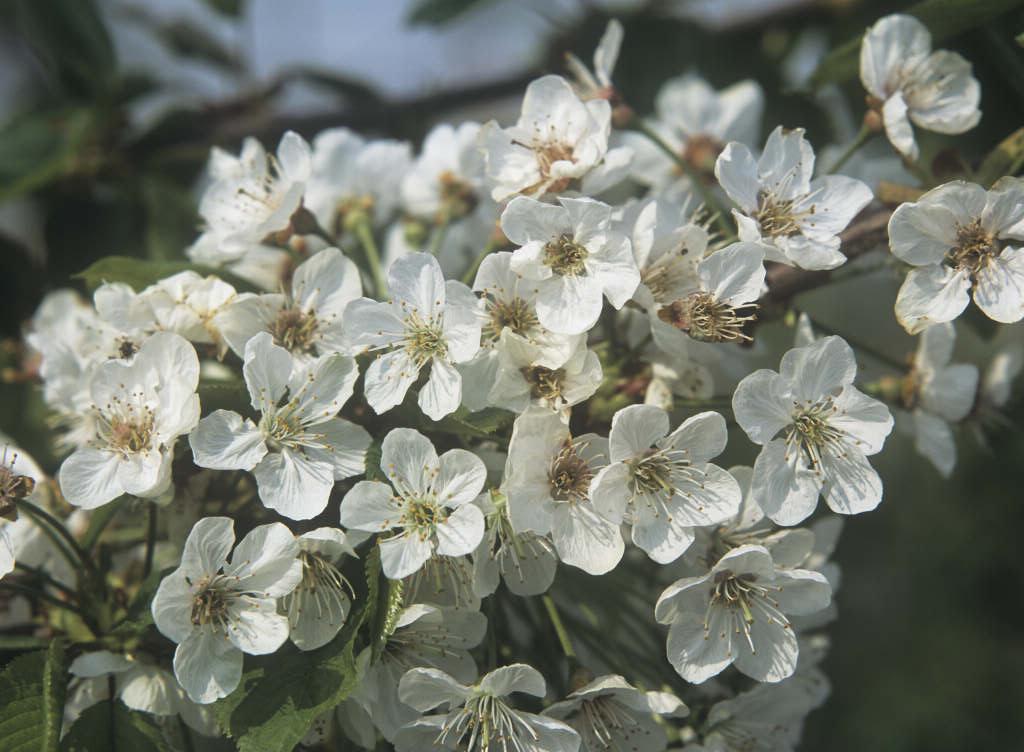Prunus avium
wild cherry
A spreading, deciduous tree with nodding clusters of pure white flowers 2.5cm wide in late spring, followed by small, shiny red-purple fruits; dark green leaves, bronze when young, turn orange and red in autumn. Many cultivated varieties of cherry have been bred from this species
Other common names
bird cherryCheshire merry tree
see morecrab cherry
gean
hagberry
mazzard
merry tree
Suffolk merries
sweet cherry
ceiriosen ddu
Size
Ultimate height
Higher than 12 metresTime to ultimate height
20–50 yearsUltimate spread
Wider than 8 metresGrowing conditions
Moisture
Moist but well–drained, Well–drainedpH
Acid, Alkaline, NeutralColour & scent
| Stem | Flower | Foliage | Fruit | |
| Spring | White | Bronze Green | ||
|---|---|---|---|---|
| Summer | Green | |||
| Autumn | Orange Red | Purple Red | ||
| Winter |
Position
- Full sun
Aspect
North–facing or West–facing or East–facing or South–facing
Exposure
Exposed or Sheltered Hardiness
H6Botanical details
- Family
- Rosaceae
- Native to GB / Ireland
- Yes
- Foliage
- Deciduous
- Habit
- Bushy
- Genus
Prunus can be deciduous or evergreen trees or shrubs with showy flowers in spring, and often good autumn foliage colour. Some have edible fruit in autumn, and a few species have ornamental bark
- Name status
Correct
- Plant range
- Europe to Asia Minor, Caucasus, W Siberia
How to grow
Cultivation
Grow in moderately fertile soil in full sun. Cherries are best suited to fan-training so they can be netted against bird damage and protected from frosts. See sweet cherry cultivation for more advice
Propagation
Propagate by chip budding or grafting, although softwood cuttings in early summer with bottom heat can be successful.
Suggested planting locations and garden types
- Cottage and informal garden
- Wildflower meadow
- Wildlife gardens
- Flower borders and beds
- Edible fruit
Pruning
Train fan-trained trees in spring. Prune established fans and carry out routine pruning on established cherry trees when harvesting the fruits in summer
Pests
May be susceptible to cherry blackfly, pear and cherry slugworm and winter moth caterpillar. The fruit can be damaged by spotted wing drosophila and birds
Diseases
May be susceptible to peach leaf curl, silver leaf, bacterial canker, blossom wilt and honey fungus. High Risk Host for Xylella fastidiosa
Get involved
The Royal Horticultural Society is the UK’s leading gardening charity. We aim to enrich everyone’s life through plants, and make the UK a greener and more beautiful place.
